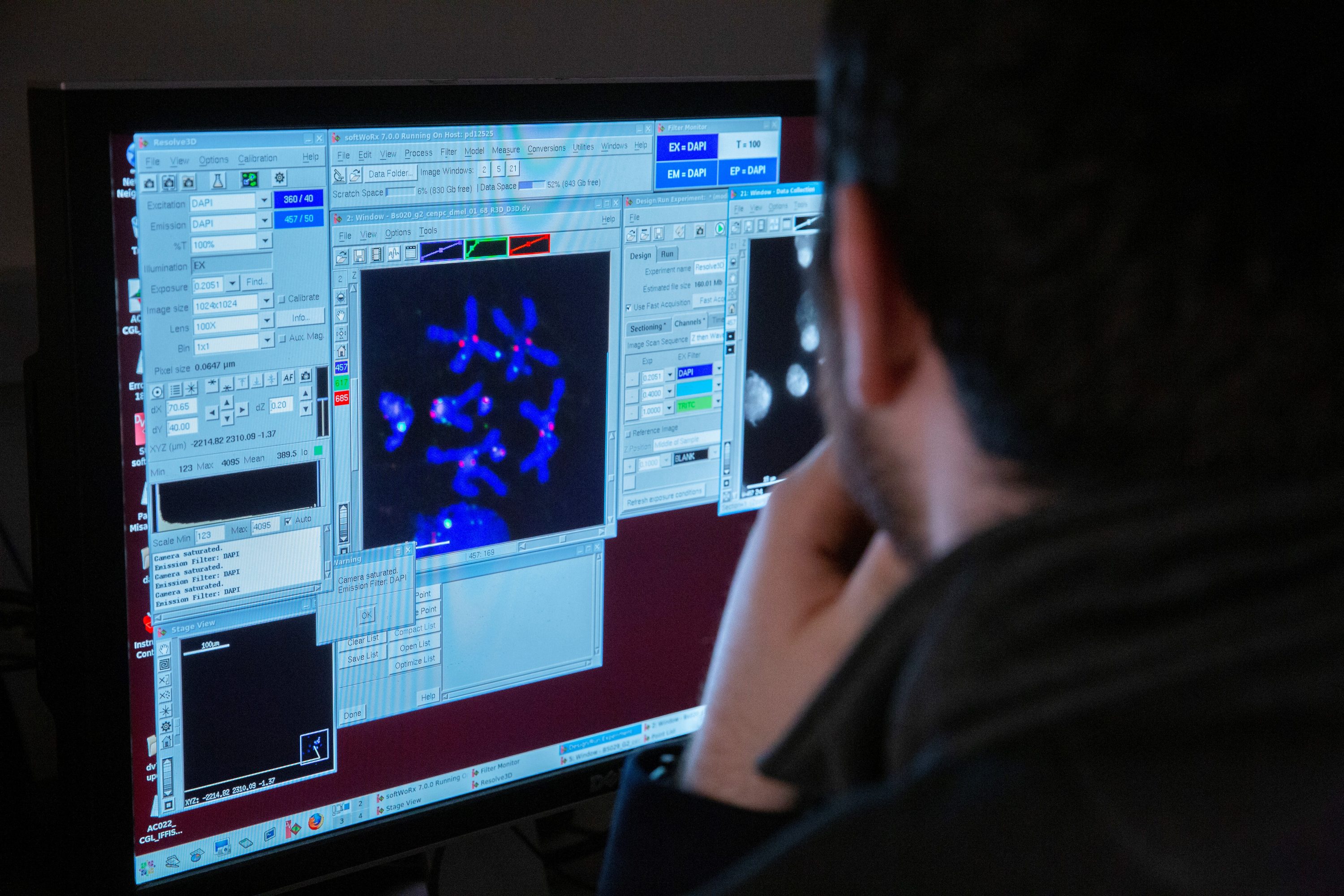Despite your age, most of the cells in your body are probably only seven to 10 years old. This is because our cells are constantly dividing and replacing themselves. This cellular division allows us to grow and regenerate old or damaged cells and is critical for reproduction.
Cell division is key to most functions of all living organisms, but a lot can go wrong in the process and lead to cancer, infertility, miscarriages, and developmental abnormalities.
University of Connecticut associate professor of molecular and cell biology Barbara Mellone has received a $2.6 million Maximizing Investigators Research Award (MIRA) from the National Institutes of Health to study the role of one of the most important and elusive elements of cell division: the centromere.
Our DNA is carried on chromosomes each made up of a set of identical sister chromatids. The chromatids are connected by the centromere, generally positioned at the center of the chromosome.
When the cell divides, chromosomes line up along the equator line of the cell. Rope-like structures called spindle microtubules reach out from either end of the cell and attach to the chromosomes at the centromere. Then, they pull the sister chromatids apart to opposite poles of the cell where they are pinched off into two new identical daughter cells.
We know that the centromere plays a key role in cell division, but scientists don’t have a full picture of how centromeres are specified and signaled into action. Mellone’s project will address this question by testing models of centromere specification. She will look at both centromeric DNA and chromatin, the substance in chromosomes consisting of compacted DNA and proteins.
Previous work demonstrated that both centromeric DNA and a centromere-specific histone protein in the chromatin called CENP-A, have the potential to initiate centromere activity. However, their respective contributions to centromere specification in mitosis and meiosis have remained a mystery.
This project will test if chromatin-mediated centromeres can sustain chromosome segregation without the use of DNA cues. Mellone will also look at how centromeric DNA elements may contribute to CENP-A chromatin establishment or maintenance.
Gaining a deeper insight into this process could enable future research about how to prevent cellular abnormalities that originate with the centromere.
“This work will shed light into centromere specification mechanisms in Drosophila, an exceptional model system that allows centromere studies in the context of animal development and fertility with broad relevance to other species, including humans,” Mellone says.
Mellone received her Ph.D. from the Medical Research Council, Human Genetics Unit, in Edinburgh, Scotland. She completed a postdoctoral fellowship at UC Berkley. Her lab studies the regulation of chromosomes segregation during cell division in higher eukaryotes and the contribution of centromeres and kinetochores in this process and determining how their findings apply to humans, and to diseases related to chromosome dysfunction, such as developmental abnormalities and cancer.



